Organic Cannabis Seed Cultivation at Home: Tips and Tricks
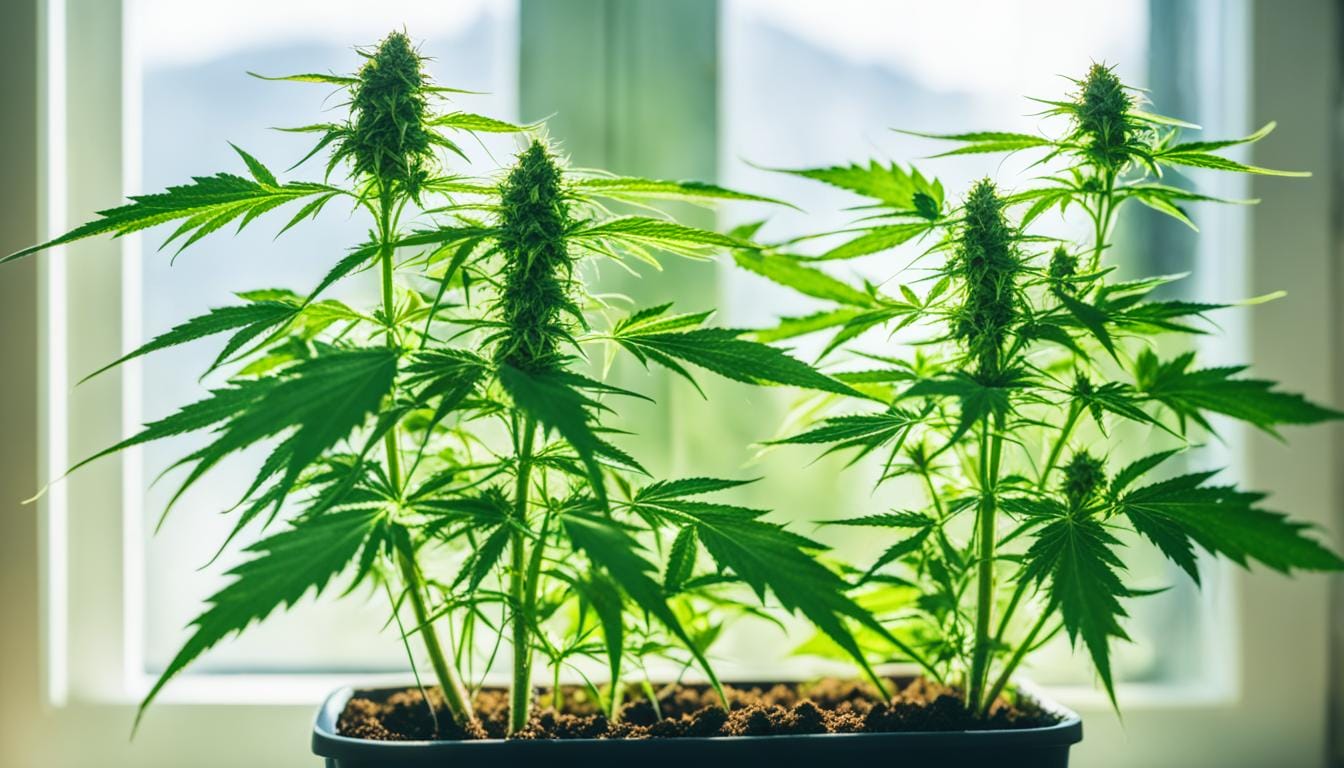
Did you know that the demand for organic cannabis is on the rise, with more and more people opting to grow their own marijuana at home? According to recent studies, the global organic marijuana market is projected to reach a value of $16.09 billion by 2026, growing at a CAGR of 17.4% from 2019 to 2026.
If you’re interested in joining the growing number of home cultivators and want to learn how to grow organic cannabis seeds, you’ve come to the right place. In this article, we will provide you with the best practices for cultivating marijuana indoors, tips for growing cannabis in a home garden, and techniques for mastering the crucial seedling stage.
Key Takeaways:
- Organic cannabis seed cultivation is a growing trend, with the global organic marijuana market projected to reach $16.09 billion by 2026.
- This article provides tips and techniques for growing organic cannabis seeds at home.
- Topics covered include indoor cultivation, home garden cultivation, and mastering the seedling stage.
- By following these tips, you can produce your own organic cannabis and enjoy the benefits of growing your own medicine or recreational herb.
- Remember to always research and comply with the laws and regulations in your area regarding cannabis cultivation.
What Are Organic Nutrients?
When it comes to cultivating organic cannabis, the use of organic nutrients is essential. But what exactly are organic nutrients, and why are they important for your marijuana plants?
Organic nutrients are derived from living things and contain carbon. Unlike synthetic or chemical fertilizers, organic nutrients provide a natural and sustainable approach to feeding your plants. These nutrients are sourced from organic matter such as compost, manure, bone meal, kelp, and various other organic substances.
The main nutrients that marijuana plants require for healthy growth are nitrogen (N), phosphorus (P), and potassium (K), often referred to as NPK. Each of these nutrients plays a specific role in different stages of plant development.
The Role of Nitrogen (N)
Nitrogen is crucial during the vegetative stage, as it aids in the development of lush green foliage. It promotes leaf and stem growth, enhances photosynthesis, and improves overall plant vigor.
The Role of Phosphorus (P)
Phosphorus is most important during the flowering stage when cannabis plants require higher levels of this nutrient. Phosphorus promotes strong root development, improves flower formation, and contributes to the production of essential oils and terpenes. It also aids in the transfer of energy throughout the plant.
The Role of Potassium (K)
Potassium is essential throughout the plant’s life cycle. It plays a vital role in water uptake and nutrient transport, enhances resistance to pests and diseases, and promotes overall plant health and vigor.
Now, let’s take a look at some popular organic marijuana fertilizer brands that can provide these essential nutrients for your cannabis plants:
| Organic Fertilizer Brand | Main Nutrients |
|---|---|
| 1. Fox Farm | Nitrogen, phosphorus, potassium |
| 2. Dr. Earth | Nitrogen, phosphorus, potassium |
| 3. General Organics | Nitrogen, phosphorus, potassium |
| 4. Nature’s Living Soil | Nitrogen, phosphorus, potassium |
When growing in organic soil, it’s worth noting that supplemental nutrients may not always be necessary. Organic soil enriched with compost can provide a balanced and nutrient-rich environment for your plants to thrive. The addition of compost adds organic matter and beneficial microbial life, which further enhances nutrient availability and plant health.
Organic Pest Control
Organic pest control is a fundamental aspect of maintaining an organic garden. Natural methods can effectively manage pests without the use of harmful chemicals. Let’s explore some eco-friendly techniques that can help protect your plants and promote a healthy garden ecosystem.
Companion Plants
One approach to organic pest control involves using companion plants strategically. Certain plants have natural properties that can help repel pests or attract beneficial insects. For example, planting basil near your cannabis plants can deter pests like aphids and mosquitoes. Cayenne pepper and garlic are also potent deterrents for insects. By interplanting these companion plants, you can create a more resilient garden ecosystem.
Extract Oils
Another effective method for organic pest control is utilizing extract oils from plants. Plants like mint and lavender contain oils with powerful insect-repelling properties. You can extract these oils and use them as natural insecticides. Simply dilute the oils with water and spray them onto your cannabis plants. This organic solution can help protect your crops from pests while avoiding the use of harmful chemicals.
Beneficial Bugs
Introducing beneficial bugs into your garden is a sustainable way to control pests. Ladybugs and predator mites are examples of beneficial bugs that feed on harmful insects like aphids and spider mites. You can attract these bugs to your garden by providing them with habitats and food sources. This natural pest control method helps maintain a balanced ecosystem and reduces the need for chemical interventions.
| Pest Control Method | Benefits |
|---|---|
| Companion Plants | Repels pests naturally, promotes biodiversity |
| Extract Oils | Safe and organic insecticide alternative |
| Beneficial Bugs | Controls pest populations without chemicals |
Tips for Growing Organic Cannabis Outdoors
Growing organic cannabis outdoors is an excellent way to cultivate your plants in a natural and sustainable manner. Whether you have a spacious backyard or a small balcony, with the right techniques and conditions, you can successfully grow organic cannabis plants that thrive under the sun.
Soil Composition
Creating a nutrient-rich soil composition is essential for the healthy growth of outdoor cannabis plants. Consider using a combination of super soil and compost to provide the necessary nutrients. Super soil is infused with organic matter and minerals, which slowly release nutrients to the plants over time. Compost enriches the soil with beneficial microorganisms and improves overall soil structure.
Here’s an example of a soil composition you can try for your outdoor cannabis garden:
| Soil Ingredient | Benefits |
|---|---|
| Pumice | Improves drainage |
| Earthworms and castings | Enhances soil fertility |
| Kelp meal | Provides essential nutrients |
| Perlite | Aerates the soil |
| Bat guano | Rich in nutrients |
| Fish emulsion | Boosts plant growth |
| Peat moss | Retains moisture |
Temperature and Sunlight Requirements
Outdoor cannabis plants thrive in a temperature range of 70-85°F (21-29°C) during the day and 50-70°F (10-21°C) at night. They require a minimum of 5-6 hours of direct sunlight per day, ideally during the middle of the day when the light quality is best. Position your plants in an area that receives ample sunlight to promote optimal growth.
Watering and Nutrient Monitoring
When watering your outdoor cannabis plants, avoid using tap water, as it may contain chlorine and other chemicals that can harm the plants. Instead, collect rainwater or use filtered water to ensure the purity of the water source. Monitor your plants regularly for signs of nutrient deficiencies and adjust your fertilization routine accordingly.
Protective Measures
Outdoor cannabis plants are exposed to various environmental elements. To protect them from extreme weather conditions, consider using raised beds to prevent waterlogging in rainy climates. Windbreaks and protective enclosures can also shield the plants from strong winds and frosty conditions.
By following these tips for growing organic cannabis outdoors, you can create an environment that nurtures healthy growth and yields bountiful harvests. With the right soil composition, proper temperature and sunlight requirements, and regular monitoring of water and nutrients, your outdoor cannabis garden will thrive in a natural and sustainable way.
Tips for Growing Organic Marijuana in Hydroponics
Growing organic marijuana in hydroponics allows for the cultivation of high-quality cannabis using organic principles. By following these tips, you can create a thriving hydroponic setup that produces organic marijuana with optimal yields and quality.
1. Select Organic Fertilizers
When growing organic marijuana in hydroponics, it’s crucial to use fertilizers that meet organic standards. Consider using fertilizers that contain organic compounds such as calcium nitrate, potassium nitrate, and iron chelate. These nutrients will provide your plants with the essential elements they need for healthy growth.
2. Choose Natural Growing Substrates
The choice of growing substrate is vital in hydroponic systems. Opt for natural options like coconut fibers, worm castings, perlite, bark, or peat. These substrates provide a stable foundation for your plants, retain moisture efficiently, and allow for proper aeration.
3. Ensure Adequate Aeration and Drainage
A well-aerated and free-draining hydroponic system is key to growing organic marijuana successfully. It promotes healthy root development, prevents the buildup of excess moisture, and reduces the risk of root diseases. Regularly check the aeration and drainage system to maintain optimal conditions for your plants.
4. Use Organic Nutrient Mixes
Organic nutrient mixes specifically formulated for hydroponics are available in the market. These mixes contain all the necessary nutrients your plants need to thrive in a hydroponic environment. They provide a convenient and effective way to ensure that your plants receive proper nutrition throughout their growth cycle.
5. Employ Organic Pest Control
Just like in traditional cultivation, organic pest control is essential in hydroponic systems. Use organic pest control methods, such as introducing beneficial insects, to prevent infestations and maintain a healthy growing environment. Regular monitoring and early intervention can help prevent pest-related issues.
6. Use Organic Fungicides
To prevent the growth of mold and diseases, consider using organic fungicides specifically designed for hydroponic systems. These products will help safeguard your plants against fungal infections and maintain their overall health.
By implementing these tips for growing organic marijuana in hydroponics, you can create a sustainable and fruitful system. Ensure that you maintain proper nutrient levels, monitor your plants closely, and provide them with the care they need. With dedication and attention to organic principles, your hydroponic garden can produce high-quality organic marijuana.
Seeds vs. Clones when Growing Organically
When it comes to growing organic cannabis, there are two main options: seeds and clones. Both methods have advantages and disadvantages, so it’s important to consider which approach best suits your needs. Let’s take a closer look at seeds and clones and explore their unique characteristics.
Advantages of Growing Marijuana Seeds
One of the significant advantages of growing marijuana seeds is the incredible variety available. Seeds come in numerous strains, offering a wide range of flavors, aromas, and effects. Whether you prefer sativa, indica, or hybrid varieties, you’ll find endless options to choose from. Additionally, seeds are well-suited for different climates, allowing you to select the best strain for your specific environment.
Another vital aspect of growing seeds is their suitability for autoflowering strains. Autoflowering seeds are particularly popular among beginners due to their convenience and ease of cultivation. These plants automatically shift from the vegetative stage to the flowering stage, resulting in faster harvests and simplified cultivation methods.
Advantages of Growing Marijuana Clones
Marijuana clones offer their own set of advantages. One primary benefit is that clones skip the germination and seedling stages, saving time and effort. This can be particularly beneficial for growers who lack experience or prefer a faster cultivation process.
Furthermore, clones allow you to replicate specific characteristics and traits of a mother plant. This can be advantageous if you have a particular strain that you want to reproduce without any genetic variation. However, it’s important to note that clones may also pass on undesirable characteristics, so careful selection is crucial.
Tips for Growing Organic Marijuana in Coco Coir
Growing organic marijuana in coco coir is becoming increasingly popular due to its ease and effectiveness. Coco coir is a natural and sustainable growing medium that provides excellent water retention and aeration, making it ideal for cannabis cultivation.
To successfully grow organic marijuana in coco coir, here are some important tips:
- Use a custom blend soil: Create a custom blend soil mixture that includes coco coir, compost, perlite, and vermicompost. This blend will provide the necessary nutrients and improve the medium’s overall structure and drainage.
- Opt for liquid nutrients: Liquid nutrients, especially those that are molasses-based, are highly recommended for growing cannabis in coco coir. These nutrients are easily absorbed by the plants, ensuring they receive the essential elements needed for healthy growth.
- Ensure proper drainage: Good drainage is crucial in coco coir cultivation to prevent waterlogging and root rot. The medium should be well-drained, allowing excess water to flow freely and oxygen to reach the roots.
- Add beneficial bacteria and fungi: Incorporating beneficial bacteria and fungi into the coco coir can promote a healthy root zone and enhance nutrient uptake. Products containing mycorrhizal fungi and other beneficial microbes can be added to the soil mix.
- Implement top dressing: Regularly top dressing the coco coir with organic substrates like worm castings and compost helps replenish essential nutrients and maintain a balanced soil ecosystem. This practice supports overall plant health and vitality.
- Utilize foliar spraying: Foliar spraying with seaweed or algae solutions can stimulate plant growth, improve nutrient absorption, and enhance the plant’s natural defense mechanisms. This technique can be particularly beneficial during the vegetative stage.
- Brew organic aerated teas: Organic aerated teas brewed from various substrates, such as worm castings or compost, provide additional nutrients and introduce beneficial microorganisms to the coco coir. These teas act as a natural fertilizer and help support a thriving soil food web.
By following these tips, you can maximize the potential of your organic marijuana cultivation in coco coir. The combination of the custom blend soil, liquid nutrients, proper drainage, beneficial bacteria and fungi, top dressing, foliar spraying, and organic aerated teas will create an optimal environment for healthy and high-yielding cannabis plants.
Remember, each cannabis cultivator may have their own preferences and techniques, so feel free to experiment and adjust these tips based on your specific needs and growing conditions.
Three Simple Steps To Mastering the Cannabis Seedling Stage
When it comes to growing cannabis, the seedling stage is a critical phase that sets the foundation for the plant’s future growth and productivity. To ensure successful cultivation, there are three simple steps: choosing the right genetics, containers, and medium, using proper germination techniques, and mastering the seedling stage itself.
Picking the Right Genetics and Containers
The first step in mastering the seedling stage is selecting the right genetics and containers for your cannabis seedlings. Choosing high-quality seeds from reputable sources is crucial for ensuring healthy plant development. Look for trusted strains and reputable breeders that offer a wide range of options to suit your preferences and growing conditions.
When it comes to containers, opt for small pots or seedling trays that provide adequate drainage to prevent overwatering. Additionally, using biodegradable pots or root trainers can promote healthy root development and make transplanting easier when the seedlings outgrow their initial containers.
Using Proper Germination Techniques
Proper germination is key to starting your cannabis seedlings off on the right foot. There are several germination techniques, but one of the most popular is using paper towels.
“To germinate your cannabis seeds using the paper towel method:
- Moisten a paper towel with filtered water.
- Place the seeds on the damp paper towel, leaving some space between them.
- Fold the paper towel over the seeds to cover them completely.
- Place the folded paper towel in a sealable plastic bag or container to create a humid environment.
- Keep the bag or container in a warm and dark place, like a cupboard or drawer.
- Check the seeds regularly, keeping the paper towel moist but not overly wet.
- Once the seeds have sprouted taproots, transfer them to your chosen containers and medium for further growth.”
Optimizing Light, Temperature, and Humidity
Creating the optimal environment for your cannabis seedlings is crucial for their healthy development. You should focus on three key factors: light, temperature, and humidity.
Seedlings require the right balance of light to promote strong vegetative growth. Providing them with a full-spectrum grow light or placing them in a sunny location with 18-24 hours of light per day can help stimulate healthy growth.
Temperature and humidity also play vital roles in the seedling stage. Maintaining a temperature range of 70-80°F (21-27°C) and humidity levels around 60-70% can encourage optimal growth and prevent issues like damping off.
Watering Techniques and Care
Proper watering techniques are essential for the health of your cannabis seedlings. Overwatering can lead to root rot and other problems, while underwatering can stunt growth.
Water your seedlings thoroughly, and only when the top inch of the soil feels dry. Avoid saturating the soil, as excess moisture can suffocate the roots. Instead, aim for a moderate level of moisture that allows oxygen to reach the roots.
To protect your seedlings from pests and bugs, use organic pest control methods like neem oil or insecticidal soap. Regularly inspect your seedlings for any signs of infestation and take appropriate measures to prevent and address any issues.
Mastering the cannabis seedling stage requires attention to detail and proper care, but by following these three simple steps, you’ll be well on your way to cultivating healthy and thriving cannabis plants.
How To Water Your Cannabis Seedlings
Proper watering is essential for maintaining the health of your cannabis seedlings. Overwatering or underwatering can lead to various issues such as damping off, nutrient problems, pests, and stretchy seedlings. To ensure optimal growth and prevent these problems, it’s important to follow the correct watering techniques.
1. Watering Frequency
Watering frequency depends on the stage of growth and the moisture level of the soil. Seedlings should be watered when the top layer of the soil has completely dried out. Testing the moisture level by inserting your finger about an inch into the soil can help determine if watering is necessary.
Note: Overwatering is a common mistake that can lead to root rot and other issues. It is better to underwater than to overwater cannabis seedlings.
2. Watering Technique
To water your cannabis seedlings, gently pour water around the base of the stem, avoiding the leaves. This allows the roots to absorb the water efficiently. Using a small watering can or a spray bottle with a fine mist setting can help control the amount of water applied and prevent excessive saturation.
3. Drainage and Soil Moisture
Good drainage is crucial for healthy seedling growth. Make sure the container or pot has drainage holes to allow excess water to escape. Proper soil moisture is also important. The soil should be moist but not waterlogged. Monitor the moisture level regularly and adjust your watering schedule accordingly.
4. Preventing Damping Off
Damping off is a fungal disease that commonly affects seedlings. To prevent damping off, avoid overwatering and ensure proper air circulation around the seedlings. Using sterilized soil or a seed-starting mix can also help minimize the risk of disease.
5. Prevention of Nutrient Problems
Overwatering can lead to nutrient problems because it can wash away essential nutrients from the soil. It’s important to maintain a balanced watering schedule and use a well-draining soil mix fortified with organic nutrients to provide the necessary elements for healthy growth.
6. Prevention of Pests and Bugs
Consistent moisture can attract pests and bugs. To prevent infestations, avoid overwatering, provide proper ventilation, and keep the growing area clean and free from debris. Regularly inspect your seedlings for any signs of pests or bugs and take immediate action if necessary.
7. Prevention of Stretchy Seedlings
Stretchy seedlings, also known as leggy seedlings, occur when plants stretch excessively due to a lack of light or overcrowding. Proper watering techniques can indirectly prevent stretchy seedlings by promoting healthy root growth and overall plant vigor. Providing adequate light and maintaining the proper distance between the light source and seedlings also helps prevent this issue.
By following these watering techniques, you can ensure healthy seedling growth and set a strong foundation for your cannabis plants’ overall development.
Know When and How To Transplant Your Seedlings
Transplanting cannabis seedlings is a critical step in their growth journey. By understanding the right time and techniques for transplanting, you can ensure the healthy development of your plants. Here are a few essential tips to guide you:
- Choosing the Right Time: Timing is crucial when transplanting seedlings. Autoflowering seedlings should generally not be transplanted, as they can become stressed. On the other hand, feminized seedlings can be transplanted once they start outgrowing their starter pots.
- Selecting the Right Pot Size: When transplanting, it’s essential to choose the right pot size. Keeping seedlings in large pots initially can lead to overwatering, which can be detrimental to their growth. It’s a good practice to start with smaller pots and gradually increase the pot size as the plants mature.
- Avoiding Stress: Transplanting can be stressful for seedlings, so it’s important to minimize any additional stressors. Handle the seedlings gently, taking care not to damage the roots or stems. Ensure a smooth transition by providing them with a stable growing environment and avoiding any sudden changes in light, temperature, or humidity.
- Up-Potting for Optimal Development: While autoflowering seedlings should not be transplanted, feminized photoperiod plants can benefit from being up-potted multiple times. This process involves gradually moving the plants into larger pots to allow for better root development and overall growth.
“Transplanting seedlings is a critical step in their growth journey. By understanding the right time and techniques for transplanting, you can ensure the healthy development of your plants.”
Bonus Step: Understanding the Seedling Stage
The seedling stage is a crucial phase in the development of cannabis plants. During this period, the seedlings are delicate and require specific care to ensure healthy growth. Understanding their needs and providing an optimized environment is essential for promoting strong vegetative growth and setting a solid foundation for the plant’s overall health and productivity.
Seedlings have specific requirements for light, temperature, humidity, and watering. By meeting these needs, you can create an ideal environment that maximizes their growth potential and minimizes stress.
Importance of the Seedling Stage
The seedling stage is of utmost importance because it lays the groundwork for the entire growth cycle of cannabis plants. During this stage, the plants establish a strong root system, develop sturdy stems, and begin to form the first sets of leaves. The quality of care provided during this phase significantly impacts the plant’s future growth, health, and ability to produce high-quality buds.
Additionally, the seedling stage is when the plant transitions from relying on stored energy in the seed to deriving energy from photosynthesis. Therefore, it’s crucial to optimize the growing conditions to support efficient nutrient absorption and strong vegetative growth.
The Fragile Nature of Seedlings
Seedlings are fragile and vulnerable to various stressors. They are more susceptible to pests, diseases, and adverse environmental conditions than mature plants. Therefore, it is vital to handle them with care and provide optimal conditions to minimize potential damage and ensure healthy development.
Specific Needs of Seedlings
Seedlings have specific needs that differ from those of mature plants. They require gentle watering, sufficient but not excessive light, and controlled humidity levels. Meeting these needs is critical to prevent issues like overwatering, nutrient deficiencies, and damping-off disease.
Optimizing the Seedling Environment
Creating an optimized environment for seedlings involves paying close attention to several factors, including:
- Light: Seedlings require adequate light to support photosynthesis. Providing a light source with the right spectrum and intensity is essential for promoting healthy growth. A recommended light cycle for seedlings is 18-24 hours of light per day.
- Temperature: Maintaining the appropriate temperature range is crucial during the seedling stage. The optimal temperature range for most cannabis seedlings is between 70 and 75°F (21-24°C).
- Humidity: Seedlings thrive in a moderately high-humidity environment. The ideal humidity range for seedlings is around 60-70%. Using a humidity dome or a humidifier can help maintain the desired humidity levels.
- Watering: Proper watering techniques are crucial for seedling health. Seedlings should be watered gently, with care taken to avoid overwatering or underwatering. The soil should be allowed to dry out slightly between watering sessions to prevent root rot and other moisture-related issues.
| Factors | Ideal Range |
|---|---|
| Light | 18-24 hours of light per day |
| Temperature | 70-75°F (21-24°C) |
| Humidity | Around 60-70% |
| Watering | Allow the soil to slightly dry out between watering sessions |
By optimizing these factors, you can create an environment that supports healthy seedling growth and maximizes their potential for strong vegetative growth.
Conclusion
In conclusion, successful organic cannabis seed cultivation at home requires careful consideration of various factors. From selecting the right genetics, containers, and medium to employing proper germination techniques, every step plays a crucial role in achieving healthy seedling development. However, one of the most critical stages in this process is the seedling stage, where optimizing the growing environment and providing adequate care is essential.
By creating the optimal conditions of light, temperature, humidity, and watering techniques, you can ensure that your seedlings thrive and establish a strong foundation for future growth. During this fragile stage, it is crucial to pay close attention to the seedlings’ specific needs to promote robust vegetative growth.
With these tips for growing organic cannabis seedlings in mind, you can embark on a successful journey toward nurturing your own organic cannabis garden at home. By consistently monitoring and providing the right care during the seedling stage, you are setting yourself up for a bountiful and healthy harvest. Happy growing!
FAQs
What are the best practices for cultivating organic cannabis seeds at home?
To successfully grow organic cannabis seeds at home, it’s important to choose the right genetics, containers, and medium, use proper germination techniques, and master the seedling stage. These steps help create the optimal environment for healthy seedling development, which sets the foundation for a successful organic cannabis garden.
What are organic nutrients, and why are they important for growing cannabis?
Organic nutrients are derived from living things and contain carbon. They provide essential elements like nitrogen, phosphorus, and potassium, which are necessary for healthy marijuana plants during the vegetative and flowering stages. Organic marijuana fertilizer brands offer various options for supplementing nutrient requirements, although organic soil may provide sufficient nutrients without the need for additional supplementation.
What are some organic pest control methods for protecting cannabis plants?
Organic pest control methods include deterring pests with companion plants like basil, cayenne pepper, and garlic. Extracting oils from plants like mint and lavender can also be effective. Introducing beneficial bugs such as ladybugs and predator mites can help naturally control pest populations in an organic garden.
What are some tips for growing organic cannabis outdoors?
When growing organic cannabis outdoors, it’s important to create a soil composition with ingredients like pumice, earthworms and castings, kelp meal, perlite, bat guano, fish emulsion, and peat moss. Providing 5-6 hours of sunlight per day, ideally during the middle of the day, is crucial. A combination of super soil and compost provides the necessary nutrients. Monitoring plants for additional nutrient needs, using rain prevention strategies in rainy climates, and protecting plants from wind and frost are also essential.
Can I grow organic marijuana in hydroponics? What are some tips for doing so?
Yes, organic marijuana can be grown in hydroponics by following organic growing principles. One option is to use fertilizers containing calcium nitrate, potassium nitrate, and iron chelate in hydroponic setups. Natural growing substrates like coconut fibers, worm castings, perlite, bark, and peat can be used. Good aeration and free-draining substrates are important, and organic nutrient mixes and fungicides are available for feeding and preventing diseases. Pest control measures should also be taken to prevent infestations.
What are the advantages and disadvantages of growing marijuana from seeds vs. clones?
Growing from seeds offers more variety and is suitable for different climates. Seeds are necessary for growing autoflowering strains. Clones skip the germination and seedling stages but may pass on undesirable characteristics. Beginners often start with autoflowering seeds for easy cultivation, while experienced growers may prefer clones for preserving specific traits.
How can I grow organic marijuana in coco coir? Are there any specific techniques?
Growing organic marijuana in coco coir is considered easier than in soil. A custom blend of soil with coco, compost, perlite, and vermicompost can be used. Liquid nutrients, especially molasses-based ones, provide essential nutrients. Good drainage, beneficial bacteria, and fungi are important for healthy plant growth. Top dressing with organic substrates like worm castings and compost helps maintain nutrient balance, and foliar spraying with seaweed or algae solutions enhances overall plant health. Organic aerated teas brewed from various substrates provide additional nutrients and support beneficial microorganisms.
What are the three simple steps to mastering the cannabis seedling stage?
The three steps to mastering the cannabis seedling stage include choosing the right genetics, containers, and medium, using proper germination techniques, and optimizing the light, temperature, humidity, and watering techniques during the seedling stage itself. Providing the optimal environment and care for seedlings during this stage sets the foundation for healthy plant development.
What are some watering tips for cannabis seedlings?
Proper watering techniques are crucial for seedling health. Avoid overwatering and underwatering to prevent issues like damping off, nutrient problems, pest infestations, and stretchy seedlings. Water should be applied around the stem when the soil has completely dried out, taking care not to drown the plants or let them dry out too much. Ensuring good drainage and maintaining proper soil moisture levels are essential for healthy seedling growth.
When and how should I transplant my cannabis seedlings?
Transplanting seedlings should be done at the right time to avoid stress. Autoflowering seedlings should not be transplanted to prevent unnecessary stress, while feminized seedlings can be transplanted once they start outgrowing their starter pots. Choosing the right pot size is important, as keeping seedlings in large pots can lead to overwatering. It is also possible to up-pot feminized photoperiod plants multiple times for optimal development.
What do I need to know about the seedling stage of cannabis plants?
The seedling stage is crucial for healthy plant development, but seedlings are fragile and require specific care. Understanding their needs regarding lighting, temperature, humidity, and watering is essential for optimizing their environment and promoting strong vegetative growth. Proper care during this stage sets the foundation for the plant’s overall health and productivity.
Suggested Articles
;)
;)
;)




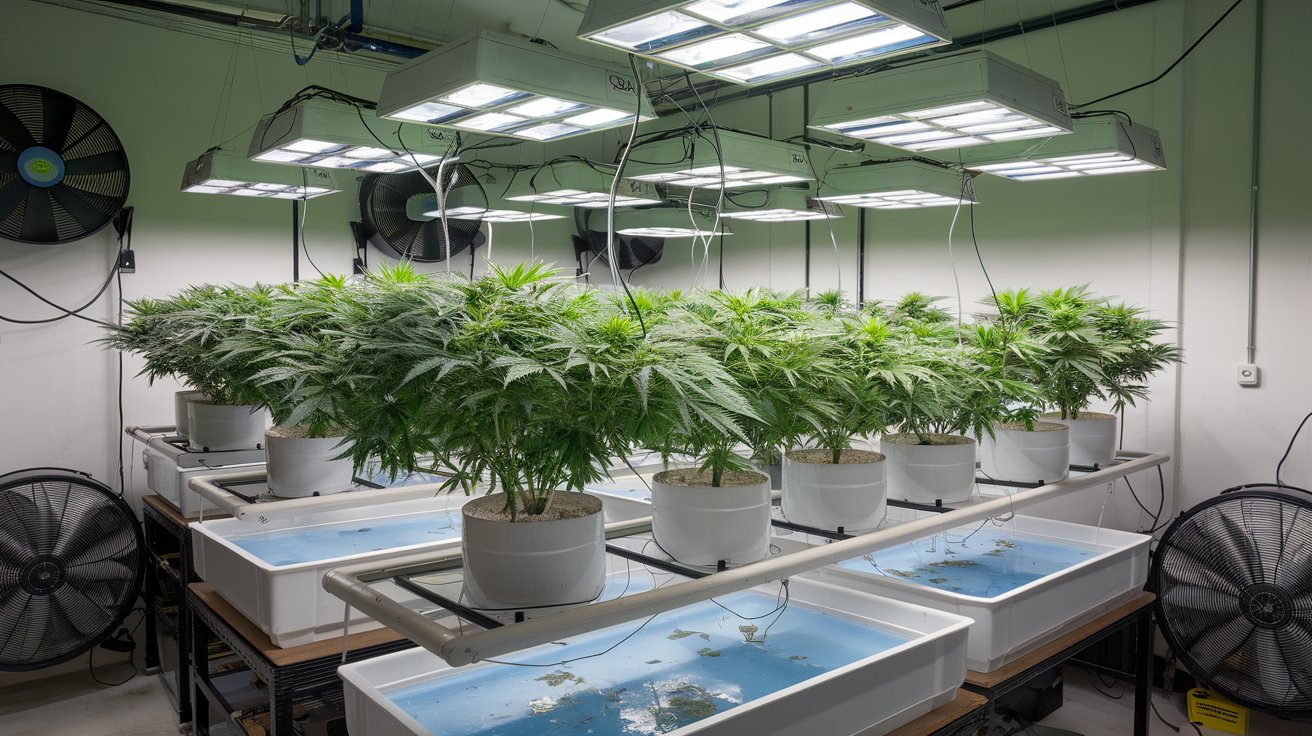
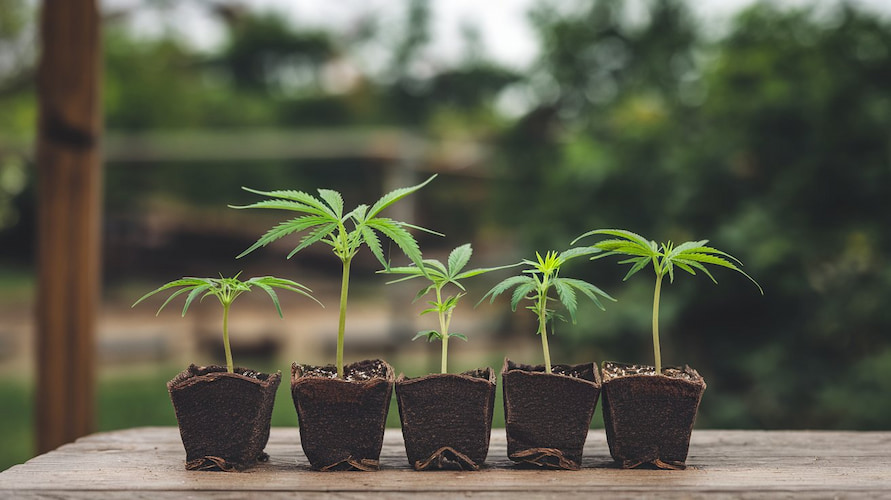
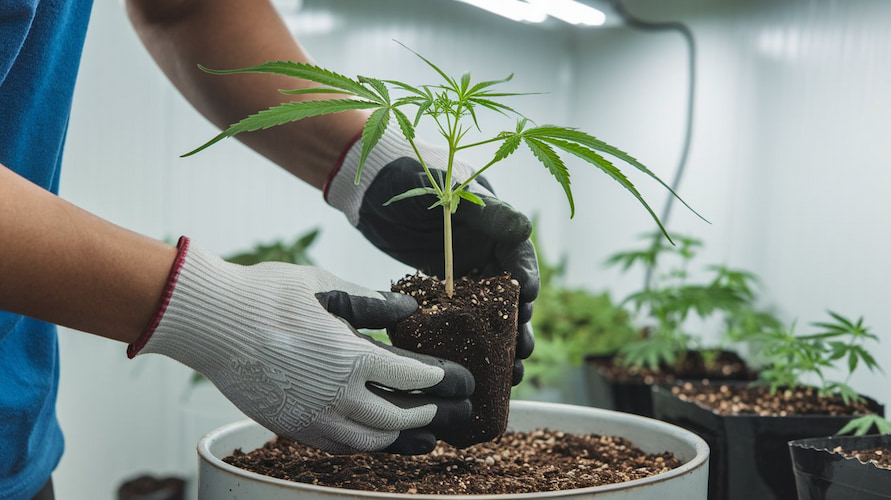

 02 Dec 2025
02 Dec 2025  13 min read
13 min read
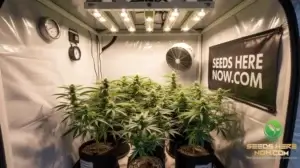
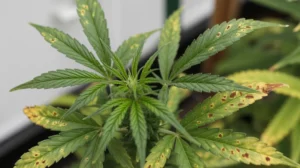
 April 04, 2025
April 04, 2025 


RESPONSES (0)
No responses yet. Be the first to respond!